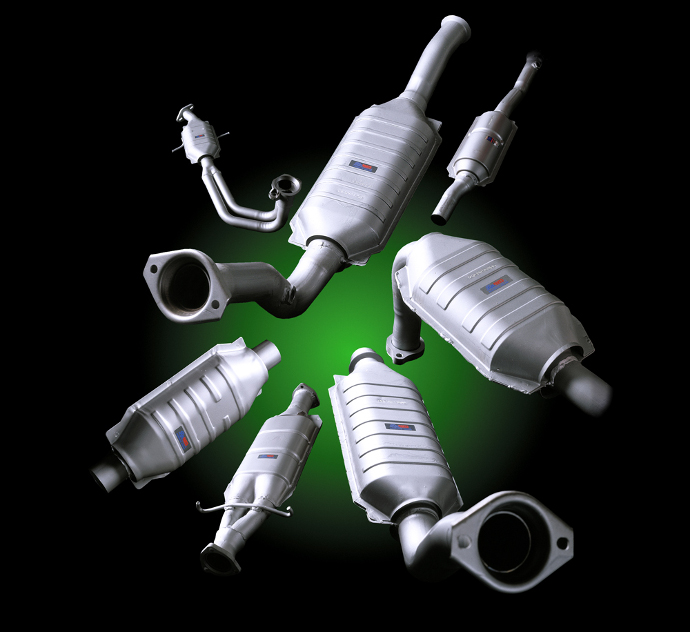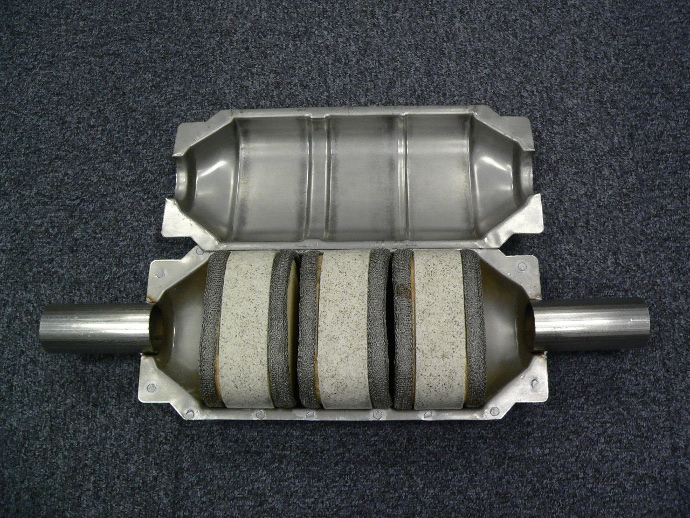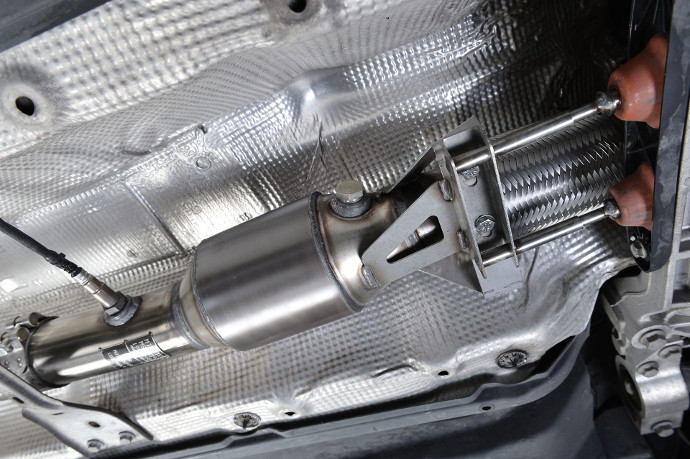Catalytic converters were fitted to all cars from 1992, so that includes a fair few collectable modern Dubs, but their function – and faults – remain something of a dark art for many. Here’s how they work, some essential tips on how to make yours last longer – and what you can do if you’re tempted to get rid of it altogether…
As soon as a car loses power or fails its emission’s test, the finger of suspicion almost always points in the direction of the Cat. Yet, in reality, being engineered to last the lifetime of a car, a catalytic converter will rarely fail of its own accord, and in most cases its early demise will be due to other easily avoidable factors instead.

What it does
Designed to cut harmful exhaust emissions, a Cat’s made up of a ceramic (or metallic) honeycomb structure which is treated with a coat of precious metals – usually platinum, radium and rhodium. Once up to operating temperature (350-400 degrees C) a three-way process takes place which chemically changes harmful emissions into less environmentally damaging ones.

What kills a Cat?
The efficiency of the Cat depends on the vehicle’s gas concentration being just right: running too rich or too lean, too hot or too cold will reduce its life and performance. Specifically, fuelling faults where the mixture is too rich will cause the Cat to run too hot and melt, and this is particularly prevalent with small capacity engines where the mixture is enriched at lower revs to make the car run smoother. Use the lambda sensor as a pre-cat exhaust gas concentration tester by simply hooking up a voltmeter to the output wire and monitor the voltage. A higher voltage than expected (check vehicle data) will indicate a rich mixture.
Service matters
Rubbish maintenance can have the same effect. Ignoring spark plug replacement intervals will increase the quantities of unburnt fuel entering the exhaust, and this will lead to meltdown when it reaches the Cat, igniting it and sending temperatures rocketing. Incorrect ignition timing, a faulty oxygen sensor or malfunctioning fuel injection mixture valves will result in the same damage. Look out for signs that the lambda sensor’s on its way out, ie MoT emissions failure and excessive fuel consumption – it should be replaced every 50-60,000 miles. Some cost as little as £25, but complex five-wire lambdas on VWs cost upwards of £200.

Heat of the matter
Running too cool will also cause Cat problems – and this can be a real issue with some bigger engined cars and diesels, especially on short journeys. The excess air ratio for diesels means they run cooler and it might take 12-15 miles before the Cat gets up to the correct operating temperature. Ditto some bigger, relaxed petrol engines which can take ages to fully warm up.
Oil burner
If a car’s burning oil, then the this can also be cruel to a Cat as can headgasket issues, or where there’s been an exhaust or gasket paste applied; the silicon in antifreeze and in the paste will eventually poison the Cat. Try to avoid bump starting a car as this can also dump unburnt fuel in the exhaust system and damage the Cat.
Water disaster
Problems can also occur where hot Cats are suddenly subject to a rapid cooling where a car is driven through standing water. The sudden contraction in the metal will cause the converter to fracture, then splinter, rendering it useless. Bare in mind that anything suggesting the catalytic converter isn’t working properly became a possible MoT failure from January 1st, 2012.

Abandoning a Cat
Anything that delays the exit of exhaust gases from the engine will inevitably have an effect on performance so removing the Cat or allowing gases to pass through it more quickly will make a difference by reducing back pressure. Cat delete pipes are the most cost effective route to getting more power from your engine, but ditching the Cat altogether means you’re guaranteed to fail an MoT emissions test. Hence why suppliers usually include the disclaimer, “for track use only.”
Sports Cats
A sports or hi-flow Cat is a far more practical solution. These are effectively less dense than a standard Cat, so why still cleaning exhaust gases through a catalytic process, they allow gases to pass through them more quickly with a lower back pressure. Stock Cats typically have 400-600 cells per square inch (cpsi) with an open area of around 55-65 per cent, while sports or hi-flow Cats will have only 100-200 cpsi with an open area of between 75-85 per cent.

Performance gains are often over exaggerated – although as a part of a tuning package, they can make a useful difference. A hi-flow cat for a 2.0-litre TFSi, for example, can add another 20bhp to an engine that’s already had a phase one remap, taking power from 200bhp to around 280bhp. Quality varies enormously, so always look for the E or TüV symbol and evidence that it’s undergone some kind of testing. Some of the cheap Chinese sports Cats you see for sale may quote 200 cpsi, but the substrate inside is of inferior quality so chances are it will fail an MoT emissions test.
Bear in mind, it’s easy to invest huge sums on exhausts for only marginal gains in power. Fitting a big bore pipe isn’t always the answer and engines with a turbo fitted need a certain amount of back pressure for it to spool up properly.
Ian
The opinions expressed here are the personal opinions of the author and do not necessarily represent the views and opinions of VW Heritage.


Hi my mk4 golf 1.4 failed on emissions very high how do l check them to see which one is broke thanks nick
We would seek the advice of your garage on this Nick.
It’s not something we stock, but they appear to be pretty cheap online, and as far as we know, you’ll only have one on your car.
Andy
is it necessary to clean catayltic converter of my vw polo 1.2 petrol ? i had changed its whole exhaust pipes from the header itself !
So, I am moving to an area without emissions restrictions, I personally don’t want my car to be a terrible polluter, however that being the case I also NEED it to perform and don’t need the headache of unforeseen malfunctions. If I were to delete the cat, are there any unforeseen damages that can take place? In my years of working on cars I cannot foresee anything beyond the check engine light that may or may not be able to be reprogrammed. But I mean mechanically the way things are designed is there something I am overlooking?
Hi I’m trying to pass inspection for my 2006 be Jetta 2.5 L but I was told I need a new catalytic converter but i don’t know where I can get one without spending a fortune
My 1989 Caddy Sport has a JH engine like the cabriolet. I have heard is described as “Americanised” its factory exhaust has a section of CAT bypass pipe after the down pipe & before the middle box. The parts list even has a CAT listed so it’s obviously built for but not with a CAT.
As my Caddy is struggling to pass it’s emissions test each year, is fitting a CAT a simple solution? I’m not too bothered about losing a little power and as it’s a factory option it sticks with my keep it original policy.